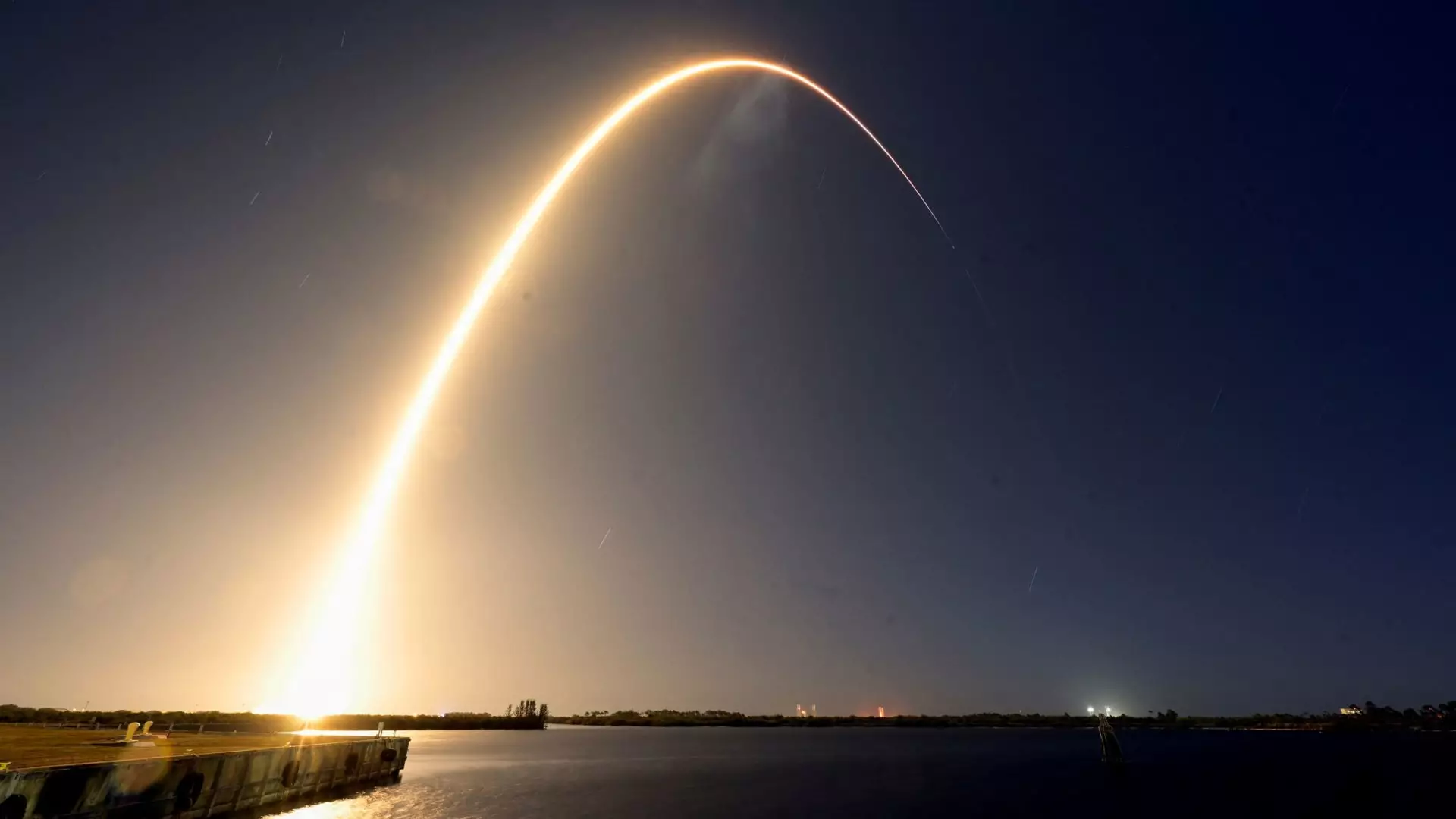In an era where lunar exploration is regaining momentum, American aerospace company Firefly Aerospace is taking significant strides with its “Blue Ghost” lunar lander. Recently launched aboard SpaceX’s Falcon 9 rocket, this mission signifies a pivotal moment not just for Firefly but also for the broader landscape of commercial space endeavors. With an ambitious 45-day journey ahead, the company aims to establish itself in the growing sector dedicated to lunar services spearheaded by NASA.
Firefly Aerospace, based in Texas, has traditionally focused on building rockets capable of launching satellites into orbit; however, it has successfully expanded its portfolio into lunar landers and space tugs. The Blue Ghost lander stands at nearly seven feet tall, adopting its name from a peculiar species of firefly native to the United States, an apt representation of the innovative spirit driving this mission.
The launch of the Blue Ghost is significant within the context of NASA’s Commercial Lunar Payload Services (CLPS) program, a groundbreaking initiative aimed at fostering commercial partnerships for lunar exploration. Under a substantial $101 million NASA contract, Firefly’s mission entails delivering a mix of ten governmental and commercial payloads to the Moon. As the third mission under CLPS, this endeavor is seen as a crucial mechanism for supporting NASA’s Artemis program, which focuses on returning humans to the lunar surface.
The landscape of lunar exploration seems to be filled with developmental challenges, as seen with previous attempts by other companies, such as Astrobotic and Intuitive Machines. While their missions encountered setbacks, Firefly’s commitment to rigorous milestone achievement lays a groundwork of confidence. Having already confirmed the successful completion of five milestones—including launch and orbital testing—Firefly appears poised to navigate the complexities of lunar landing.
Firefly’s blueprint for the Blue Ghost mission outlines a series of 17 critical milestones, with the ultimate goal of achieving a successful soft landing on the Moon’s Mare Crisium, located on its near side. Scheduled to touch down on March 2, the lander is engineered to operate during a lunar day—approximately 14 Earth days—and intends to maintain functionality into the lunar night, which poses significant challenges due to extreme temperature shifts.
This ambitious technical goal reflects Firefly’s broader aspirations in the lunar market. The space industry has shifted substantially towards expanding its capabilities, requiring companies to push the envelope in terms of both technology and reliability. The mission serves as a testing ground for these innovations, with the data collected feeding directly back into future lunar missions. In that sense, the Blue Ghost isn’t just a lander; it represents a foundational step towards greater lunar exploration.
Collaborations and Future Prospects
Adding another layer of excitement to the launch, Firefly was not alone in its lunar endeavors that day. The mission saw a collaborative dimension with Japan’s ispace, which utilized a rideshare agreement with SpaceX to send its lunar lander aboard the same Falcon 9 rocket. This collaborative spirit reflects a growing trend in the aerospace industry where partnerships can enhance capabilities, lower costs, and streamline missions.
As a testament to the burgeoning interest in lunar missions, NASA anticipates that at least five U.S. companies will undertake lunar landing missions within the next year, with 2025 expected to witness a surge in lunar exploration activities. As Firefly Aerospace forges ahead with the Blue Ghost mission, it not only positions itself competitively within the realm of lunar services but also embodies the spirit of innovation that characterizes today’s commercial space race.
Firefly Aerospace’s Blue Ghost mission is much more than a technical venture; it represents humanity’s renewed fascination with the Moon and the broader universe. By leveraging commercial partnerships and innovative technology, Firefly is not only setting the stage for potential profitability but also contributing to a legacy of exploration that could redefine our journey through space. As we look ahead, one can only ponder the possibilities that await us on the lunar surface, and how missions like Firefly’s will shape the future of space exploration.

